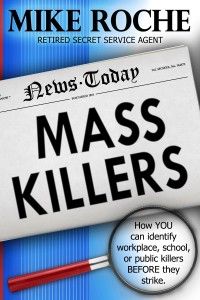Suicide
Coercive Suicide and Mass Murder
Self-destructive depression that turns outward is on the rise.
Posted January 29, 2014

We’ve recently learned that Darion Aguilar, the Columbia Mall shooter, liked to hang out there. On Saturday morning, January 25, he chose this place for his suicide. Aguilar arrived in a cab about 10:15 A.M. with a Mossberg 500 series pump-action shotgun in a backpack. He entered at the upper level and went down to the food court. An hour later, he went back upstairs, entered Zumiez, and fired six to eight shots, killing two, before turning the gun on himself.
We often don’t think much about the suicide angle in the aftermath of mass shootings, but a high percentage of these offenders had been depressed, angry, unstable, and unhappy with their lives. Yet instead of just taking themselves out, they decide to take others with them. What used to be an inward act has increasingly become outward.
I call this coercive suicide. We don’t yet know Aguilar’s motive, but typically suicidal mass murderers have the added need to punish someone, to make a public show of their death as a “lesson,” and/or to add their own notch on the infamy scale.
I was presenting a seminar on multiple murderers at last year’s Writers’ Police Academy when I met Mike Roche. He’s a former secret service agent who spent fifteen years conducting behavioral threat assessments. He has also worked on the Joint Terrorism Task Force and is currently a senior consultant at Protective Threat LLC. He sent me his recent book, Mass Killers, which offers tips about how to identify such people before they strike.
In light of the number of public-place shootings around the country in recent weeks, I asked him to elaborate on some intriguing concepts from his book.
Me: You and I both teach courses that cover mass killers, and I agree with you that perception is one of the most important ingredients in the evolution of an extreme killer. Describe what you mean when you say, 'perception is reality'?
For the potential shooter, one must look at the world through their viewfinder. I saw this with individuals who believe they are receiving messages through the television. For them, this is their reality. We must examine the world while standing in their flip-flops. They may have been fired for good cause, for example, but in their eyes, they were selected for termination by an unfair system.
Me: You mentioned that some of these mass killers experience a ‘negative emotional vortex.’ Can you tell us what this is and how it influences them?
It’s an accumulation of negative baggage in life, such as a loss of their job and identity, divorce, or financial ruin. They feel trapped in a downward spiral with what they perceive as no means of escape. Luke Woodham, the school shooter in Pearl, Mississippi, said his rampage was not a cry for help, but “a scream in agony.” This was in response to being a victim of bullying and a breakup with his girlfriend.
Me: So, he was a ‘wound collector.’ I describe them as people who cannot digest frustrations. Give us an example.
The term, ‘wound collector,’ was coined by Joe Navarro, a retired FBI agent, and I feel it’s a great illustration of the mindset. Christopher Dorner, the fired LAPD officer who wrote a lengthy manifesto, recalled being slighted in the first grade. He’d compiled a list of perceived transgressions throughout his life. When he started killing, he targeted the family of his legal counsel in his failed appeal against LAPD, as well as the uniform that he feels betrayed him. At the conclusion of the manhunt, he took his own life.
Me: Along with that idea, then, what is the mindset of "game over"?
In the video gaming world, you’ve achieved the so-called “high score” and will now exit the world on top. In the real world, they commit suicide.
Me: People are confused about a mass killer's selected target when it's not the person or people who supposedly wronged him or her. Can you say a few things about symbolic targets?
Especially in Presidential attackers and assassins, they often had no political agenda. They were solely focused on the title or the seat of power. Workplace killers will often assault the business that fired them and led to their downfall. The focus of the assault is against the corporate culture.
Me: You describe ‘literary leakage.' Give us an example.
We can learn a great deal from someone’s writings, which can often be a window into the soul. Dylan Klebold, one of the Columbine killers, wrote a paper that was essentially a blueprint for his future actions. The killer in his story was essentially Klebold in actions, dress, and physical description. The teacher was so alarmed by the story’s graphic nature that she notified Mrs. Klebold. Seung Hui Cho, the Virginia Tech killer also provided an essay for an English class in which he acted out his violent thoughts through a fictional character named Bud. In the fifth grade, Adam Lanza penned the “Big Book of Granny.” His graphically violent tale features a grandmother blasting children with a rifle cane. Another character says, “I like hurting people…especially children.” A decade later, Lanza did indeed hurt many children.
___
Thank you, Mike Roche. Mass Killers is a comprehensive guide to learning about these extreme offenders and recognizing signals of potential danger. Coercive suicides are on the rise, because increasingly more people want to be noticed before they eliminate themselves. They know they’ll get media coverage if they kill others and some gain great satisfaction in their pre-suicide fantasies of "seeing" their names alongside those of the world’s most shocking killers. Some just don't want to die alone.




